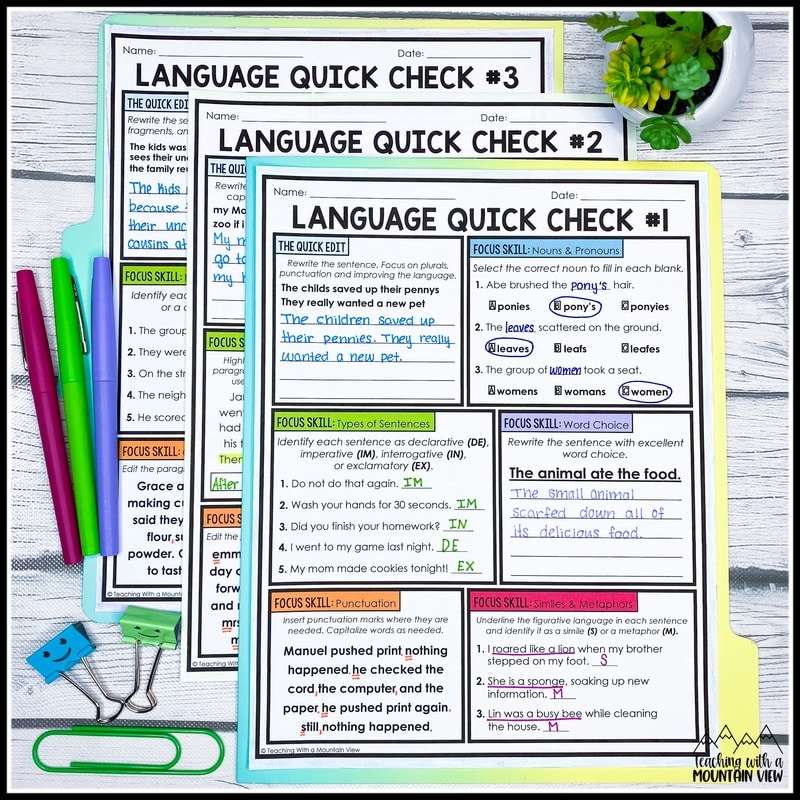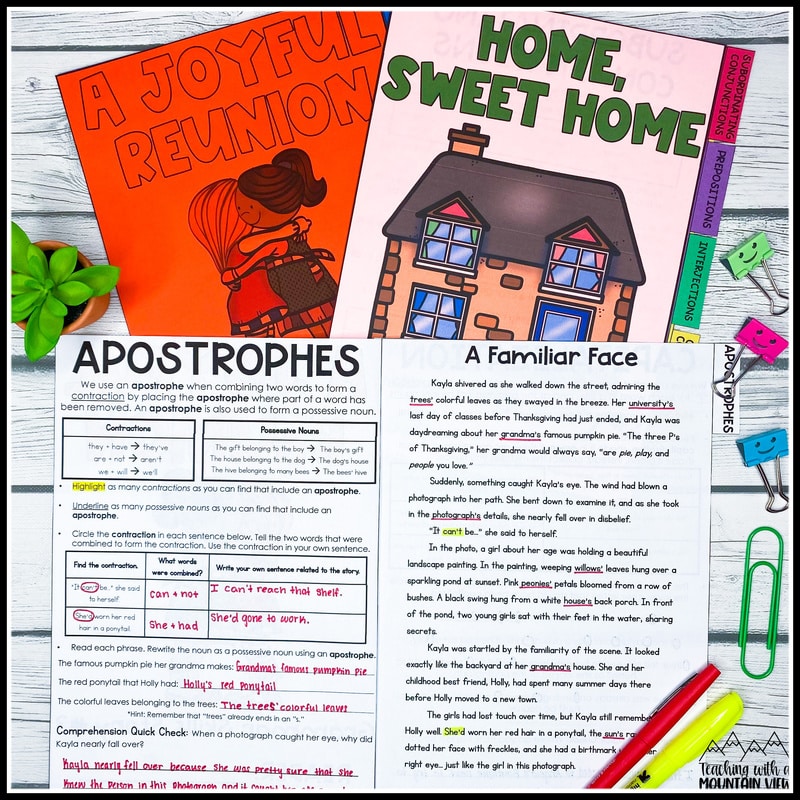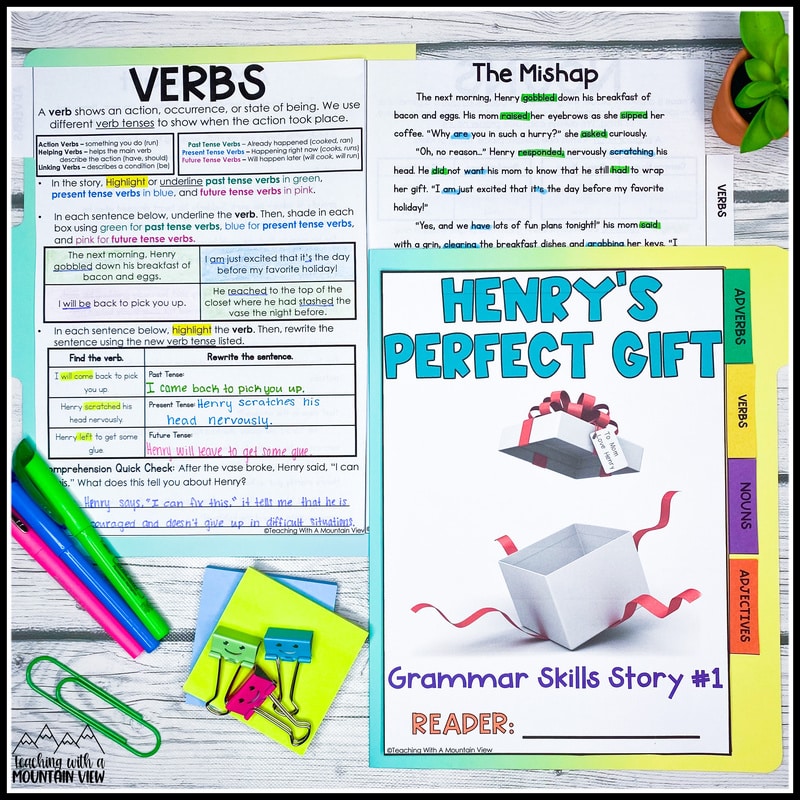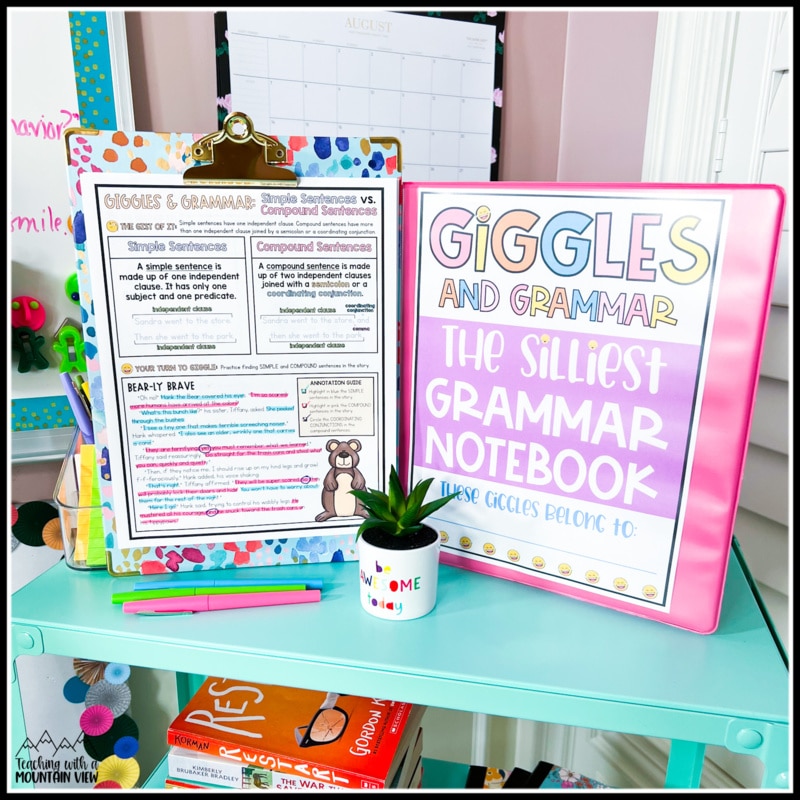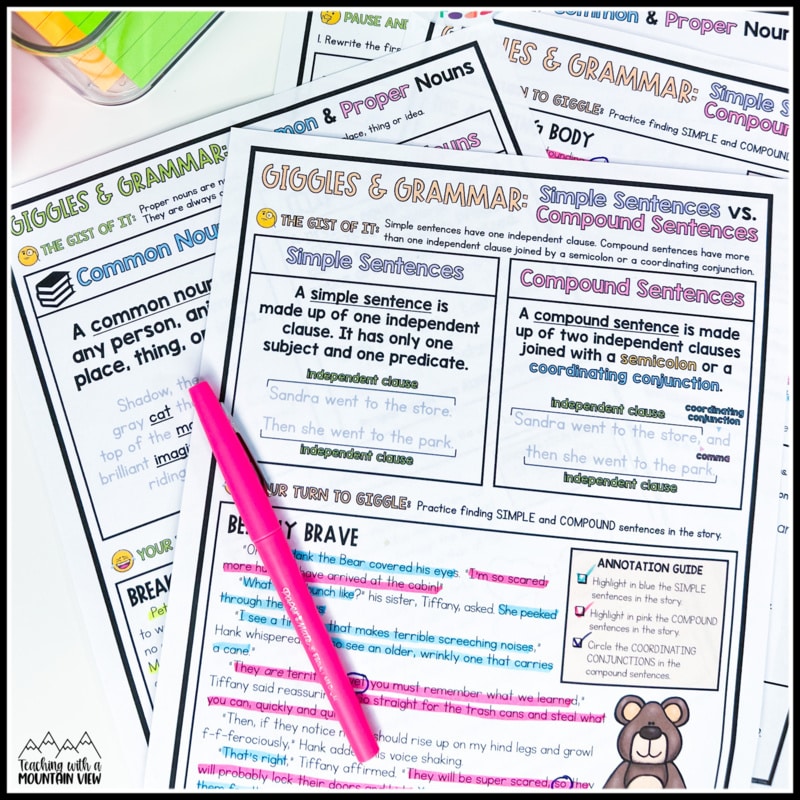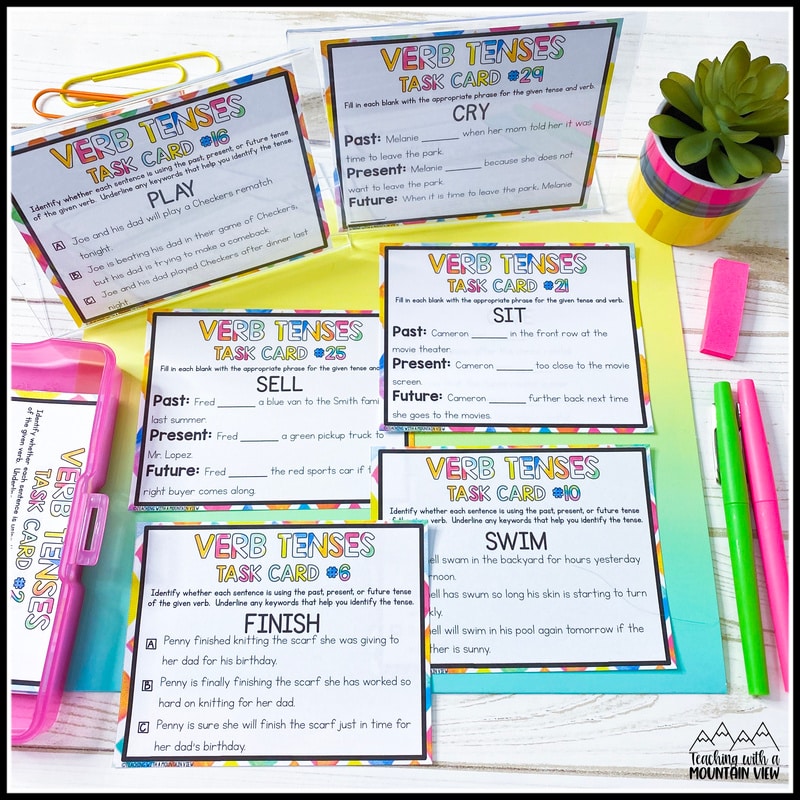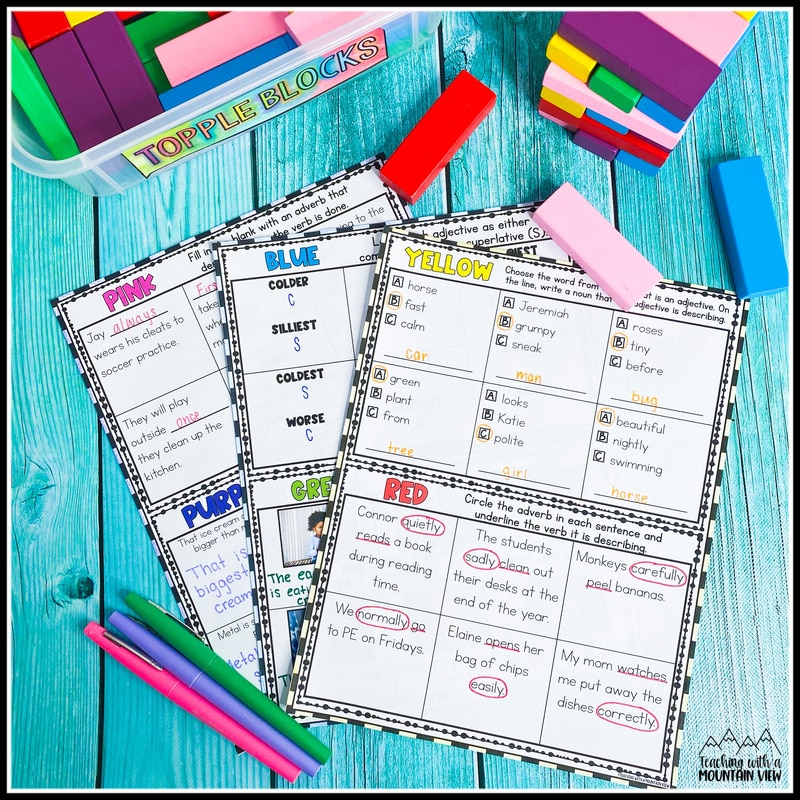6 Ways To Integrate Daily Grammar Practice Into Your Routines
By Mary Montero
Share This Post:
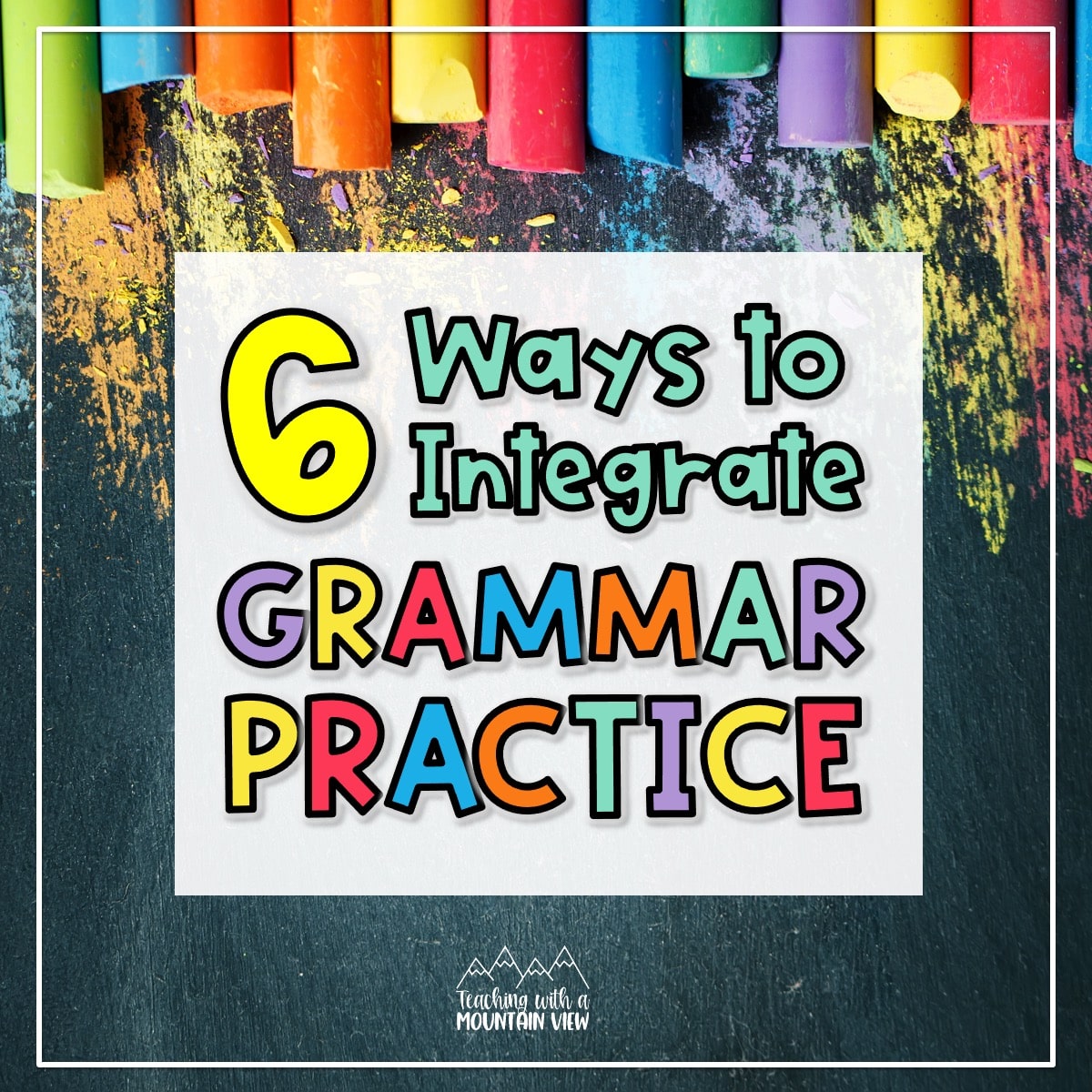
Grammar. It’s a part of English whether you love it or hate it (I’m a love it kind of girl! My grammar college courses were some of my favorites, and I LOVED diagramming sentences!) and we have so many opportunities to integrate daily grammar practice. When we read, there are grammar rules that dictate meaning. When we write, there are grammar mistakes that cause us to misunderstand or be misunderstood.
Tackling grammar in the upper elementary classroom can be overwhelming – there are so many standards and skills to cover! It’s also easy for grammar to take a back burner in our classroom to reading or math because grammar skills can often feel less important than other skills, even when they’re not. Integrating even 10 minutes of daily grammar practices into your routine is the best way to promote good grammar in the classroom.
If you’re in a self-contained classroom or have a long ELA class, you likely have a period of time that you teach grammar each day. For those who are departmentalized, it’s especially challenging to squeeze daily grammar practice into a 45 minute class period.
I like to think of grammar as “the math of ELA.” Once students have been taught the rules and the “formula,” they can practice independently throughout the year. I’m always sure to review grammar skills before setting students free to work independently. We also make anchor charts to review grammar skills, so when students are practicing them later, they can refer to the chart.
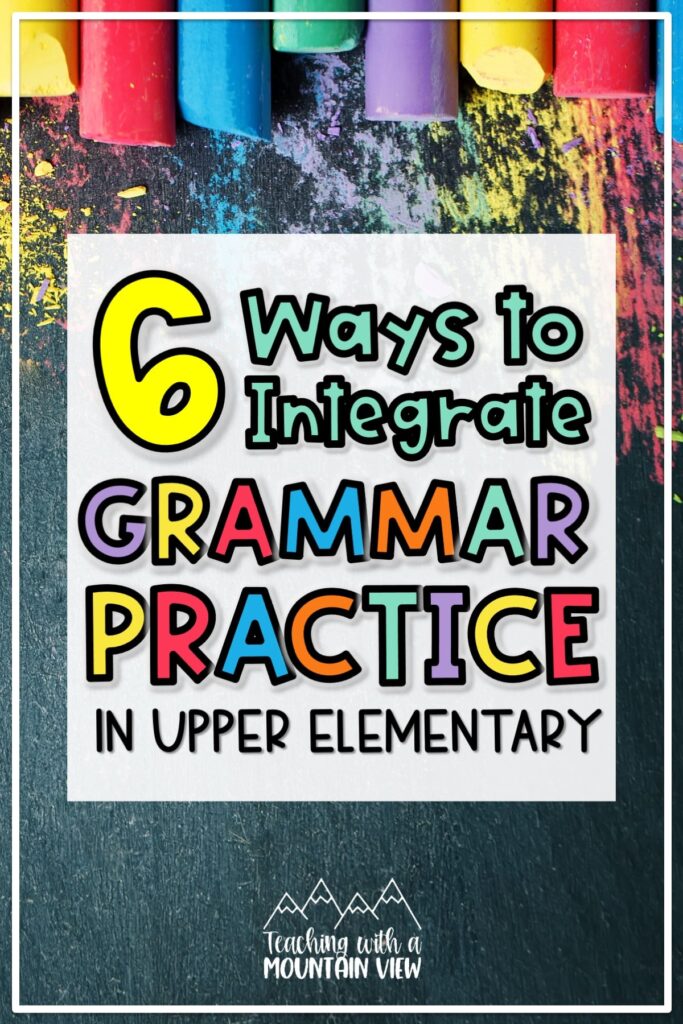
Here are my favorite ways to spiral in grammar throughout the school day:
Idea #1: Morning Work
I’ve shared about my morning routine in this post, but adding daily grammar practice is another way that you can make morning work productive and educational.
I often have grammar practice as work for students to complete when they come into the classroom. I have three activities that I particularly like using as grammar morning work.
Skill of the Day
This Language Skill of the Day weekly journal makes it simple to spiral in skills. It focuses on concepts like parts of speech, stellar sentences, word work, figurative language, and more. I created these journals so I no longer had to think, “When’s the last time we’ve gone over XYZ?!” I knew it was all covered.
You can download a FREE week of Language Skill of the day to try it out!
Weekly Language Skill Quick Check
I like using these Weekly Language Skill Quick Checks because it helps me determine which skills my students are staying fresh on, and which need to be reviewed. This 40-week review is the perfect companion to Language Skill of the Day to be used as accompanying homework OR an end-of-the-week quiz on Fridays. It follows the same scope/sequence as the weekly journal and reviews the same skills as the journal each week. However it can also stand alone as an assessment to inform instruction.
Bell Ringer
When you have a bell ringer on the board, it’s typically a review of what you have talked about with the opportunity to do a mini lesson afterwards. For example, you can put the word “bring” on the board and ask students to change it to the past tense form. If many students are writing “bringed,” then you have a chance to talk about irregular verbs. Afterwards, you can generate sentences as a class using the word “brought.” These bell ringer exercises should not take longer than 10 to 15 minutes. If it is taking longer, that’s a grammar skill you need to focus on in your next grammar lesson.
Idea #2: Explicit Instruction
I’ve recently started to use grammar flip books as an alternative to interactive notebooks. The fun flip book format is engaging, a little faster (and less messy without the glue!), and the perfect size to tuck into student folders for future reference. Each separate part/chapter of the flipbook tells its own story with its own unique story elements. Then the five smaller chapters come together to tell one bigger story in the end!
On the right-hand side of each section, there is a carefully crafted, high-interest story that unfolds over the course of five parts. Within each part of the story, there is a specific grammar skill reviewed.
On the left side of each section of the flipbook, students complete several skill-related tasks. For example, there is one section that focuses on nouns, one that focuses on verbs, etc. There is also a comprehension quick check question for each section of the story.
Students should complete the entire resource over the course of several days. The final task asks them to put all of their reading skills together to write a summary of the story.
Giggles and Grammar
I also use these super SILLY Giggles and Grammar stories as part of our explicit instruction time to teach 28 different grammar skills. Each skill has a half page (or sometimes a full page, if needed based on the skill) that teaches the skill. Then students interact with the skill in a super silly, funny passage that includes multiple choice questions and written responses for a wide variety of authentic grammar practice. One practice passage is informational and one practice passage is fictional, but both practice passages are very punny! 😉
Idea #3: Writing
It may seem obvious, but writing and grammar should go hand in hand. When I first began teaching, I would have my students write all these amazing pieces, but we would rarely spend time editing and revising. My students were missing a big opportunity to learn and practice their language skills.
When you plan your writing units, make sure to spend several days (or even weeks!) dedicated to revising and editing. This is a great chance to give mini-lessons over key language skills, such as comma rules or punctuation. Then have students apply this knowledge to their writing.
When applying editing and revising skills to writing, I also like to have reference sheets for students (because let’s be honest – there are a lot of rules). I have a FREE Grammar and Language Reference Skills Guide that you can download! You can use these anytime your students write, or even during independent grammar practice.
Finally, I personally use mentor sentences from Ideas by Jivey. Mentor sentences provide our students with a model for using different language skills, so it’s an excellent tool to use when integrating grammar and writing.
Idea #4: Literacy Centers
I recently shared this blog post about my literacy centers, and how it’s important to have a consistent routine and schedule for centers. One of my centers is always grammar or language related. By doing so, I make sure I am always spiraling in grammar skill. This can be something my students need refreshing on or something we just talked about during our writing block.
Personally, I also like to use task cards in my centers because they are easy to prepare. I particularly like this Grammar Task Card Bundle because it covers the big topics my students often need the most help with. It includes task cards on prepositions, verb tenses, commonly confused words, run-on sentences, and more.
Idea #5: Games
Have some extra time in class? Planning a fun day? Grammar games are like sneaking vegetables into a meal, and I love it! My students always enjoy playing online games such as Kahoot! or Gimkit to practice their skills.
Find The Mistake
You can also allow your students to go around the room and make mistakes for others to find on the wall or using a SmartBoard. Then, challenge students in teams to fix them. Make it worth some points and give the students a grammar prize when they win.
Place the Comma
Another game you can play is place the comma. When you’re working on commas or any punctuation, put a sentence on the board with no punctuation. If you have it displayed twice, students can race to put the correct punctuation on the board to score the most points for accuracy and speed. There are plenty of teachable moments in games like this as well. You can have students explain how they reached that answer to find where they are making a mistake or to allow them to teach others.
Musical Grammar
Musical grammar is a type of game where you have several mistakes in sentences or paragraphs in different stations throughout the room. When the music plays, students move around in pairs. When the music stops, they find a station and get to work. If possible, give each group a color to use so you know who is making corrections. This exercise is so fun because students can help each other out and they get to get up and move! This is great for those days when kids are restless and you need to steer into the skid!
Topple Blocks
My students also really enjoy playing Topple Blocks! Students pull different colored blocks from the tower, and then each student in the group is tasked with answering a language question. I have several Topple Blocks games that cover root words, dialogue, contractions, types of sentences, and many more. Check out all the Language Topple Blocks games here!
Idea #6: Cross Subjects
Another simple way to implement daily grammar practice without having to teach it explicitly every day is to use grammar in other subjects. Reading is the most obvious subject to integrate with grammar.
I use Grammar Rapid Read and Review to review grammar skills through high-interest, engaging stories in centers, small groups, whole class, or as homework to review grammar skills. It includes fiction and informational text passages focusing on individual grammar skills as well as passages focusing on identifying mixed grammar practice.
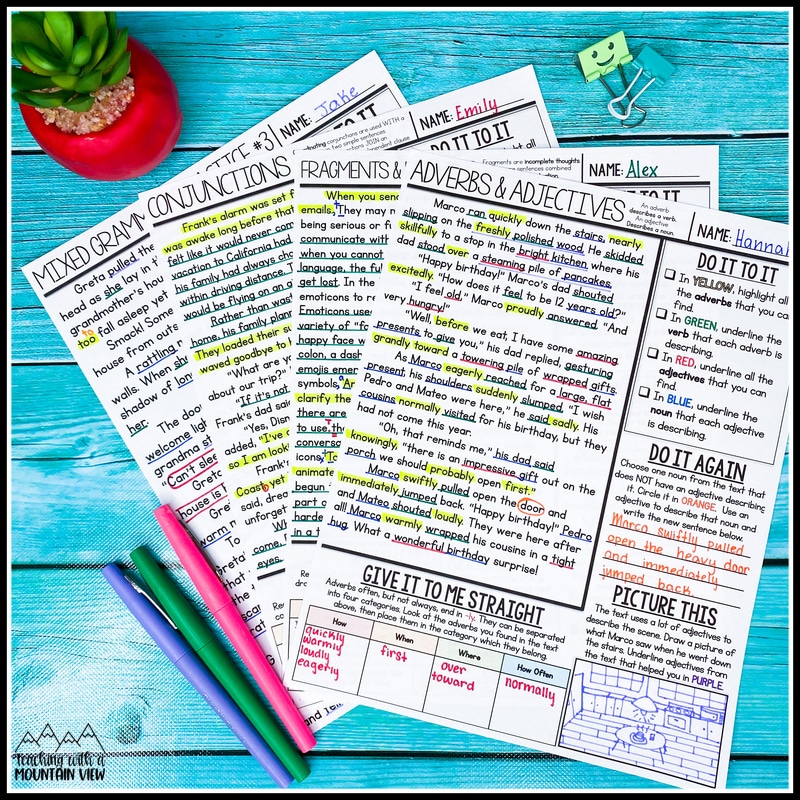
You can also integrate grammar in other subject areas. if you’re looking at a math story problem, pay attention to the way the problem is written. You can also write your own problems or add a grammar mistake for students to find in a math problem.
Integrating grammar into science passages is another option. You can talk about technical writing and how grammar changes when you write a story. You can challenge your students to turn some of the formal writing into dialogue using proper punctuation!
Grammar can be used in any subject with a little ingenuity. Always taking the teachable moments in other subjects to talk about grammar basics can make a world of difference when it comes time to focused grammar instruction.
More Grammar Ideas
Grammar can be tough to teach, but it’s important to implement as much as possible. Hopefully these ideas help you sprinkle in grammar throughout the school year. I used to think finding time for daily grammar practice was really challenging, but with these activities in place my students are consistently reviewing their language and grammar skills.
You can find more engaging grammar activities in these posts!
Mary Montero
I’m so glad you are here. I’m a current gifted and talented teacher in a small town in Colorado, and I’ve been in education since 2009. My passion (other than my family and cookies) is for making teachers’ lives easier and classrooms more engaging.







